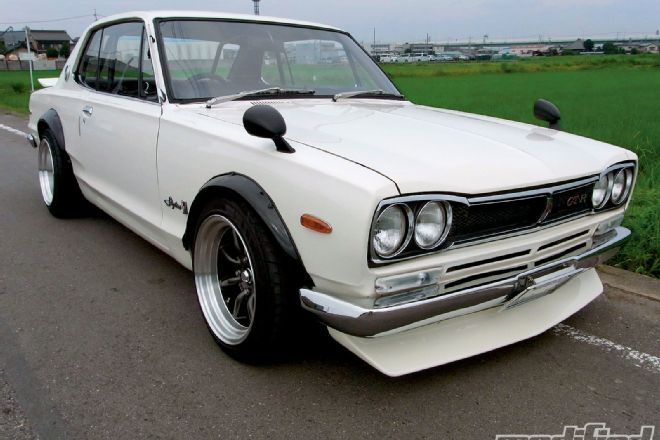Old school Japanese cars have never been more popular. This fine publication often covers the Japanese Classic Car Show (now in its sixth year), and the quality of the cars on display and the sheer number of them continues to impress. Have a peek at websites like Speedhunters.com and you'll also notice more and more coverage of classic Japanese vehicles, with comment sections full of enthusiastic declarations of love and desire.
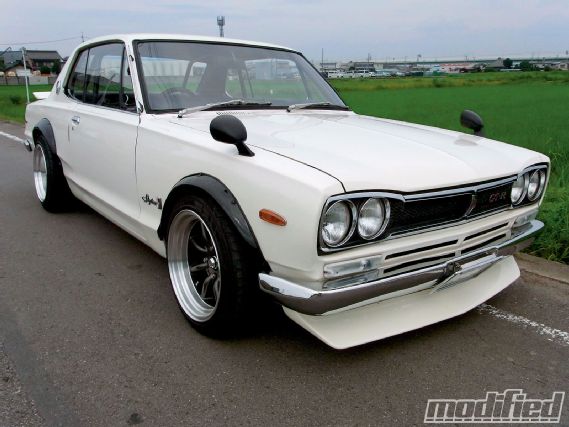 |
Kickin' It Old School - Tech Talk
|
Kickin' It Old School - Tech Talk
Simply put, Japanese classics like the S30 Datsun Z, Mazda RX-2/3/4, Hakosuka and Kenmeri Skyline GT-R, and the "Japanese Mustang" Toyota Celica GT are fantastic to look at. There's also something undeniably appealing about their simplicity and purity of design, especially when compared to their bloated and electronically neutered modern-day counterparts. Sure, a Hakosuka GT-R is no match for a R35 in terms of brute force or outright speed, but there's something special, something visceral and even empowering about driving a car with no stability control, no traction control and no ECU at all, for that matter.
As someone experienced in the ways of fuel injection and electronic engine management, the thought of fiddling with carburetors is a bit intimidating. By the early '70s, most cars had electronic ignition systems, but carbs were still the norm and represent an area of automotive technology that to anyone born in the '80s (or later) tends to be as mystical and foreign as high-waist, plaid bell bottoms and acoustic folk music. I mean, come on, a "float bowl" sounds like it has more to do with toilet plumbing than fuel injection, and "jetting the carbs" could easily be some sort of high-flying diet plan.
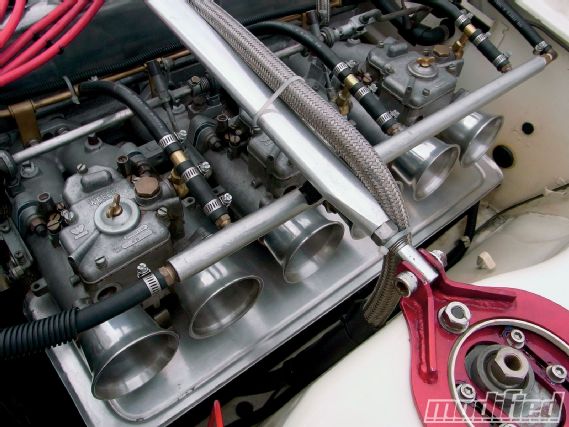 |
Want to own a classic Japanese sports car like the Hakosuka Skyline? Better learn how to tune those Weber carbs!
|
Want to own a classic Japanese sports car like the Hakosuka Skyline? Better learn how to tune those Weber carbs!
Thankfully, there's still a wealth of knowledge out there on the subject of carburetion, which makes understanding how the maze of fuel and air passages that constitutes a carb a fair bit easier. And the truth is, a carburetor is a pretty complex piece of engineering, given that it has to be able to mechanically meet the changing fuel needs of an engine, from idle to wide-open throttle at high rpm.
Despite the complexity of the device itself, the concept of carburetion is really quite simple. In liquid form, gasoline doesn't burn and therefore needs to be vaporized. Through an elaborate network of internal air and fuel passages, the fuel is atomized and introduced into the air stream before the throttle plate(s) and intake manifold plenum. As the atomized fuel mixes further within the intake plenum, it vaporizes into a gaseous state as it travels down the intake runners on its way to the intake valves, at which point it's ready to enter the combustion chamber and start that wondrous process of internal combustion.
At its core, a carburetor is basically just a tube - like a modern throttle body - including a throttle plate to control how much air is being allowed into the mix. Where a carb differs from a throttle body is the way in which it introduces fuel into the airstream, using a narrowing of its air inlet to create a pressure differential. The hourglass shape of the carb's inlet uses the venturi effect to create a low-pressure area that serves to draw fuel from the carb's bowl and up through a hole called the main jet and into the airstream.
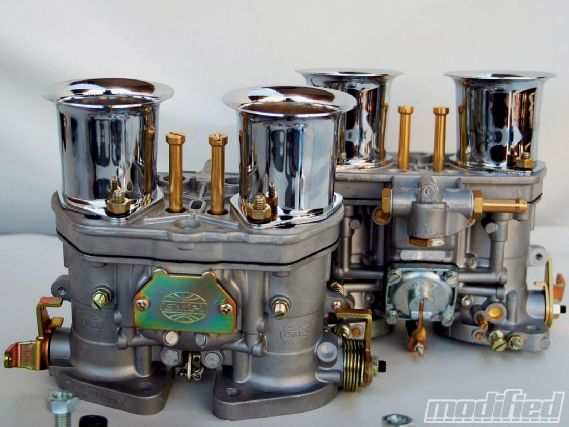 |
Kickin' It Old School - Tech Talk
|
Kickin' It Old School - Tech Talk
It's a common misconception that vacuum within the intake manifold pulls fuel from the carb's bowl, but since manifold vacuum drops to zero at wide-open throttle, it's the venturi effect that actually moves the fuel into the airstream. A carb's fuel bowl has air vents, which allows the bowl area to be pressurized to 14.7 psi (normal atmospheric pressure). The venturi effect reduces pressure to about 13.5 psi at the manifold, so it's this 1 psi of pressure differential that draws full up from the bowl and through the jet into the airstream.
On the outside of the carburetor, there are at least two adjuster screws that control needle valves. One of these screws is used to control how much fuel is allowed through the main jets and into the venturi at wide-open throttle, while the other screw is used to adjust how much fuel is allowed into the venturi at idle. As I'm sure you know, when an engine is idling, the throttle plate is nearly closed. In the case of carburetion there isn't enough airflow through the venturi at idle to create the needed vacuum to draw fuel into the mix. There is, therefore, a small hole called the idle jet or pilot jet in the side of the carb's inlet tube just behind the throttle plate, which creates enough vacuum (adjusted by the idle screw) such that fuel can be drawn into the venturi. So by simply turning these two adjuster screws, you can effectively tune the air/fuel mixture for everything from idle to wide-open throttle.
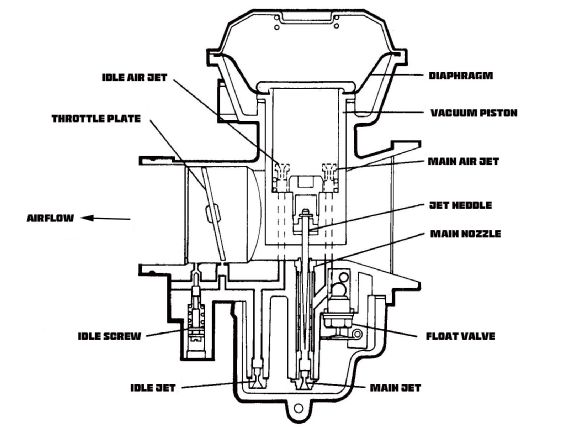 |
There are a lot of different carburetor designs out there, but this diagram gives you a basic breakdown of a carb's anatomy.
|
There are a lot of different carburetor designs out there, but this diagram gives you a basic breakdown of a carb's anatomy.
Since fuel is drawn from the bowl through the main jets, sizing these jets correctly for the engine is extremely important to overall engine performance. Obviously, the larger the jets the richer the air/fuel mixture, while smaller jets lean out the air/fuel ratio. This being the case, it's quite easy to tune out a rich or lean condition by simply changing the jet's flow rating. Throw a little modern technology at your classic car in the form of a wideband a/f meter and you can dial in your jet sizing with a high degree of accuracy.
Similarly, sizing the carb itself, and more specifically the diameter of its inlet and venturi, also needs to be matched correctly to the engine. A quick Google search reveals several formulas that recommend a specific carb size based on variables like engine displacement and rpm range. While these calculators may give you a decent starting point, they don't factor in variables like the airflow efficiency of the cylinder head(s) or aggressiveness of the camshaft(s). So there will generally be some trial and error required to dial in the perfect-sized carb for your engine. Most experts recommend starting with a carb on the smaller end of the size spectrum, hook up a vacuum gauge to the intake manifold and run the engine up to its redline. If the carb pulls more than the ideal 1.5 inches of vacuum, then you know it's undersized. Conversely, if you decide to test a bigger carb and it only pulls 1 inch of vacuum at wide-open throttle, then you know it's too big (which will result in poor low- and midrange power). Overall, shooting for 1.5 inches of vacuum at wide-open throttle typically yields the best compromise between peak horsepower and driveability.
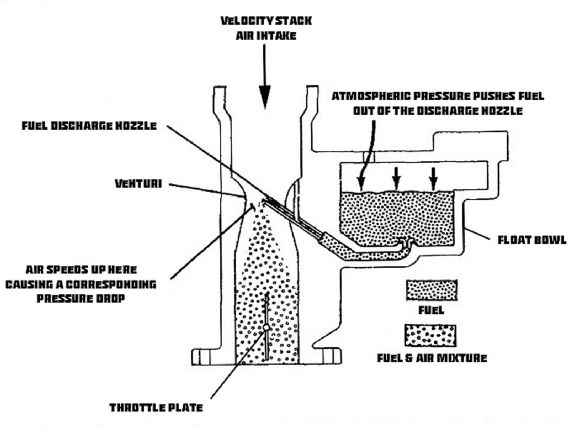 |
Using the venturi effect as well as a "booster" (sort of a venturi within a venturi) and emulsification, fuel is pulled out of the float bowl and atomized on its way to the combustion chamber.
|
Using the venturi effect as well as a "booster" (sort of a venturi within a venturi) and emulsification, fuel is pulled out of the float bowl and atomized on its way to the combustion chamber.
Much like individual throttle bodies on a fuel injected engine, multi-barrel carbs add some complexity to the system but also allow you to tune the air/fuel mixture for each cylinder or pair of cylinders. Oftentimes on classic sports cars you'll see a stack of inlet trumpets (or velocity stacks), each one having its own separate throttle plate and tunable jet system. It's also important to understand that if your fuel system isn't able to keep the carb's bowl full, then it doesn't matter how many barrels you have or how big or small each air inlet or jet is, you're going to run into fueling problems.
If this quick and dirty look at carburetion does the same for you as it's done for me, then rather than being intimidated and mystified by them you may find yourself Googling the topic and learning more about this amazing mechanical way of controlling an engine's air/fuel mixture. Carbs really are a fascinating piece of engineering, and for me the prospect of learning to tune a set of 2-barrel Mikunis or 4-barrel Webers adds even more allure to the classic car ownership experience. Let us know if you'd like to see a classic Japanese project car added to our stable.

